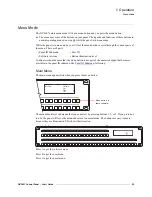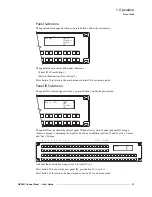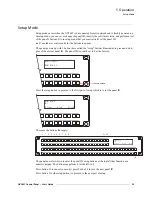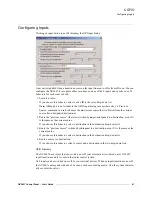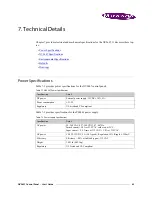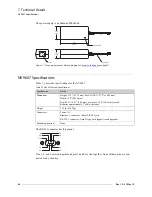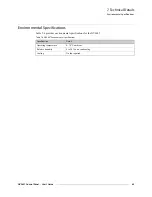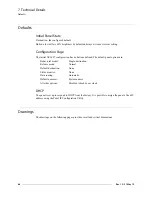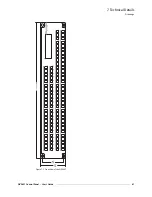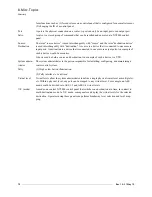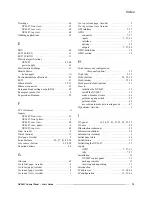
60
Rev 1.1 • 21 May 10
6. GPIO
Configuring Outputs
In Figure 6-4, that sub-expression is ANDed with another sub-expression
INPUT 3 OR INPUT 8
The relay will turn on when the
entire
expression is true. That is, when the switch occurs and either
of the inputs (3 or 8) transitions from off to on.
(To allow a relay to switch when an input transitions from on to off, precede the input term by
“NOT.” For example, the expression
INPUT 3 OR NOT INPUT 8
will evaluate TRUE when either input 3 goes on or input 8 goes off.)
You can also include one or more sub-expressions regarding the state of output ports. You must
choose a entry in the drop-down menu. These are the choices:
The operation was successful
Destination port locked
Destination port protected
Router offline / unavailable
No tieline available
Used as master point to point
Used as master without responses
Used as broadcast master
Used as slave point to point
Used as slave without responses
Used as broadcast slave
As an example, choosing ‘Used as broadcast slave’, device VTR3, and level CTRL for output port
status produces the sub-expression:
CTRL on VTR3 has status of ‘Used as broadcast slave.’
which you can combine with other sub-expressions as you require.
The actual logic takes place in the router control system, based on the state of the NV9607 inputs
and other system-wide events. The router control system sends signals to the NV9607 instructing it
to open or close its relays.
Four arrow buttons at the lower left corner of the relay dialog allow you to traverse the expression
you are building:
The left double arrows highlights the first term or operator in the expression. The right double
arrow positions you at the very end of the expression where you may add more items.
The single arrows select and highlight the previous or next terms, operators, or spaces between
terms and operators. If you wish to change a term, you may highlight it, reconstruct the term in the
appropriate entry fields, and click the ‘Change’ button to effect the change.
Using the arrows is the only way to position between two items or at the end of the expression. You
can double-click a term or an operator to select it directly.
You can click ‘Check Syntax’ to evaluate the syntax of your complete expression. Generally, an
syntax error will have occurred because you forgot an operator between terms or you have an extra
operator at the end. You can click ‘Delete’ to delete a selected term.
This is a summary of Boolean operations:
All operands evaluate either TRUE or FALSE.
AND = true if ALL terms are true; false if ANY term is false.
OR = false if ALL terms are false; true if ANY term is true.
NOT = true if term is false; false if term is true (i.e., negation).
S
Relay output expressions can be as rich (or complex) as you require.
Summary of Contents for NV9606
Page 10: ...x Rev 1 0 21 May 10 Table of Contents ...
Page 20: ...10 Rev 1 0 21 May 10 2 Introduction Other NV9607 Functions ...
Page 40: ...30 Rev 1 0 21 May 10 4 Configuration Multi Destination Configuration ...
Page 66: ...56 Rev 1 0 25 May 10 5 Operation Setup Mode ...
Page 72: ...62 Rev 1 1 21 May 10 6 GPIO Configuring Inputs ...
Page 82: ...72 Rev 1 0 21 May 10 8 Misc Topics Power Cord Retention ...
Page 90: ...80 Rev 1 0 18 Aug 10 Index ...




